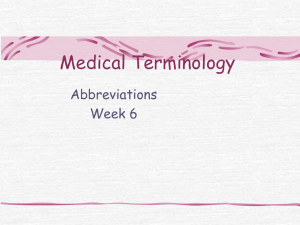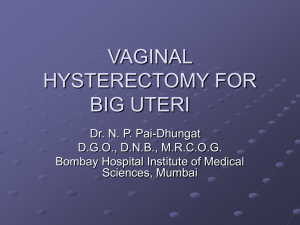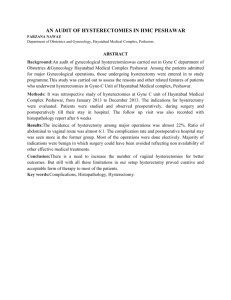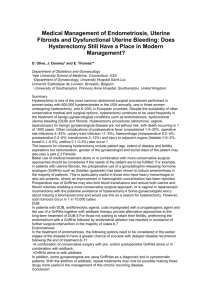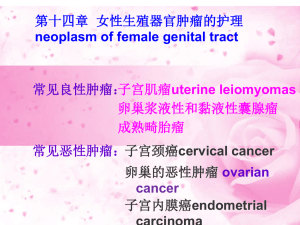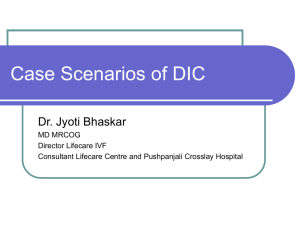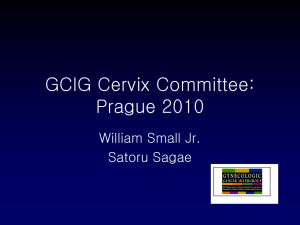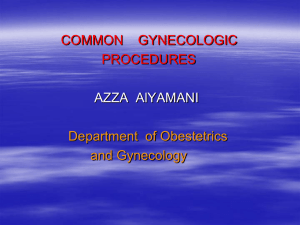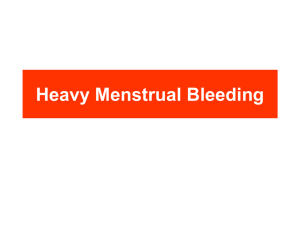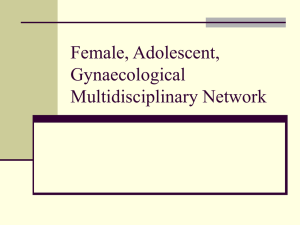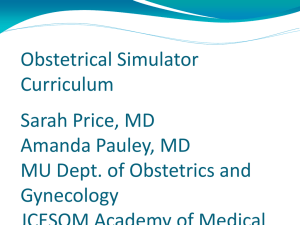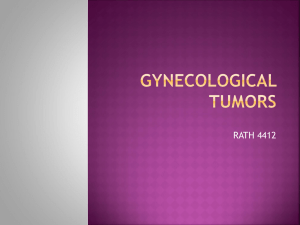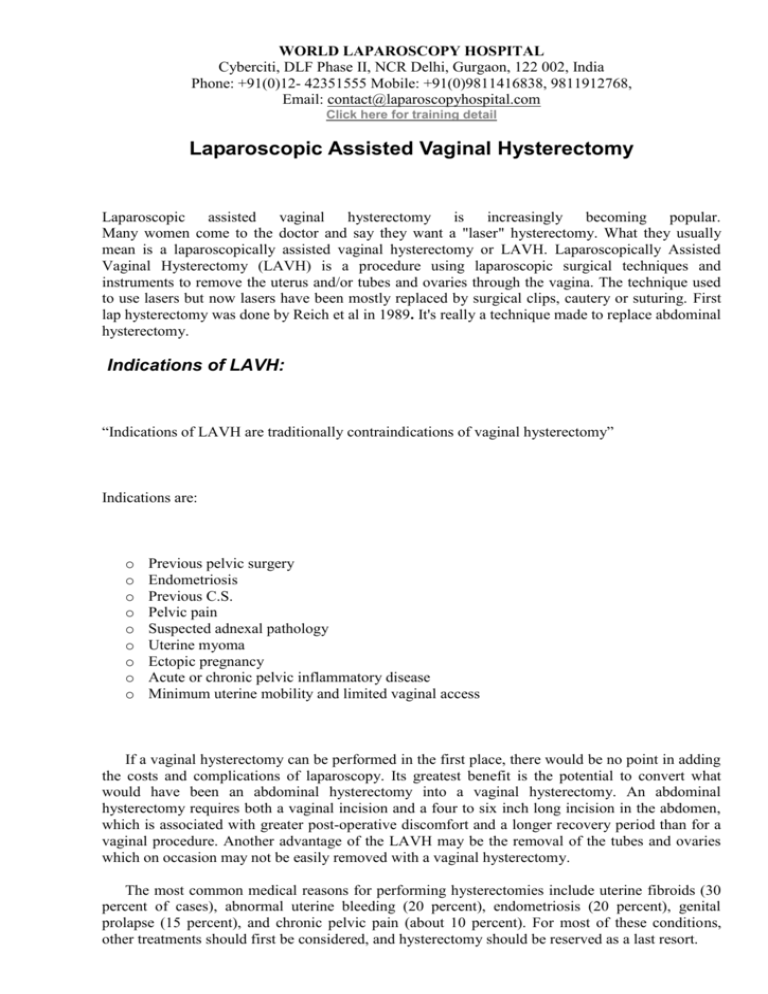
WORLD LAPAROSCOPY HOSPITAL
Cyberciti, DLF Phase II, NCR Delhi, Gurgaon, 122 002, India
Phone: +91(0)12- 42351555 Mobile: +91(0)9811416838, 9811912768,
Email: contact@laparoscopyhospital.com
Click here for training detail
Laparoscopic Assisted Vaginal Hysterectomy
Laparoscopic assisted vaginal hysterectomy is increasingly becoming popular.
Many women come to the doctor and say they want a "laser" hysterectomy. What they usually
mean is a laparoscopically assisted vaginal hysterectomy or LAVH. Laparoscopically Assisted
Vaginal Hysterectomy (LAVH) is a procedure using laparoscopic surgical techniques and
instruments to remove the uterus and/or tubes and ovaries through the vagina. The technique used
to use lasers but now lasers have been mostly replaced by surgical clips, cautery or suturing. First
lap hysterectomy was done by Reich et al in 1989. It's really a technique made to replace abdominal
hysterectomy.
Indications of LAVH:
“Indications of LAVH are traditionally contraindications of vaginal hysterectomy”
Indications are:
o
o
o
o
o
o
o
o
o
Previous pelvic surgery
Endometriosis
Previous C.S.
Pelvic pain
Suspected adnexal pathology
Uterine myoma
Ectopic pregnancy
Acute or chronic pelvic inflammatory disease
Minimum uterine mobility and limited vaginal access
If a vaginal hysterectomy can be performed in the first place, there would be no point in adding
the costs and complications of laparoscopy. Its greatest benefit is the potential to convert what
would have been an abdominal hysterectomy into a vaginal hysterectomy. An abdominal
hysterectomy requires both a vaginal incision and a four to six inch long incision in the abdomen,
which is associated with greater post-operative discomfort and a longer recovery period than for a
vaginal procedure. Another advantage of the LAVH may be the removal of the tubes and ovaries
which on occasion may not be easily removed with a vaginal hysterectomy.
The most common medical reasons for performing hysterectomies include uterine fibroids (30
percent of cases), abnormal uterine bleeding (20 percent), endometriosis (20 percent), genital
prolapse (15 percent), and chronic pelvic pain (about 10 percent). For most of these conditions,
other treatments should first be considered, and hysterectomy should be reserved as a last resort.
LAVH result in a significantly shorter hospital stay, with a much more rapid return to normal
activities, than TAH. The drug requirement to control pain and the level of pain patients
experienced were also significantly less. Blood loss was not different for the two procedures.
TABLE 1 Postoperative Pain Levels
Day
LAVH (n -= 19)
TAH (n= 19)
pa
1
6.6
6.4
NS
3
4.4
4.3
NS
7
2.8
3.6
S
14
1.6
2.4
S
21
1.46
1.8
S
Week 6
1.35
1.4
NS
Wilcoxon's signed rank test.
Ten-point activity scale: 1 = no pain, 10 = unbearable pain.
S = significant at p < 0.005; NS = not significant at p <0.01
TABLE 2 Postoperative Activity Levels
Day
LAVH (n -= 19)
TAH (n= 19)
pa
1
3.4
3.3
NS
3
5.4
4.4
NS
7
7.8
5.8
S
14
9.2
6.4
S
21
9.6
7.9
S
Week 6
9.95
8.5
S
Wilcoxon's signed rank test.
Ten-point activity scale: 1 = extremely limited activity, 10 = no limits on activity
S = significant at p < 0.005; NS = not significant at p <0.01
Postoperative recovery times and pain levels were assessed in 37 patients with a primary
complaint of pelvic pain and diagnoses of fibroid uterus, adenomyosis, and severe endometriosis
who underwent LAVH. Women reported an activity level of 8.7 on a scale of 1 to 10 (10 no
limits on activity) by postoperative day 14. In another study those undergoing abdominal
hysterectomy had a mean uterine weight of 418 g compared with 150 g for those undergoing
LAVH. The hospital stay after abdominal hysterectomy was 4.5 days and after LAVH 2.5 days.
An important public policy issue now confronts us. As it is currently performed, LAVH is more
expensive than TAH. The issue is whether the benefits of shorter convalescence and faster return
to the work force, shorter hospitalization, and less need for narcotics for postoperative pain
outweigh the disadvantage of the higher cost. If total health care system costs are evaluated, the
short-term disability costs of 2 weeks of recovery after laparoscopic hysterectomy should be
compared with disability costs of 6 to 8 weeks of recovery after abdominal hysterectomy.
For LAVH to be economically viable compared with TAH, savings in disability costs and
the increased contribution to the gross domestic product must offset the increased health care costs.
In the current system, insurance companies and hospitals do not share in these benefits, only the
costs. The economic impact of laparoscopic surgery must take into account both the cost to the
hospital and insurance payers and these productivity and social issues. Insurance is based on a risk
pool whereby the cost of a premium is based on the cost of treatment, not the ability of the
subscriber to return to work. An economic and social cost-benefit analysis must be performed
before decisions are made to modify or judge a procedure that provides substantial benefits to the
patient.
Since its introduction in 1989, continued improvement of techniques will likely progress
rapidly so that LAVH will be performed on an outpatient basis for many women, and will result in
shorter recovery time.13 thus the increased operating room time of approximately 46 minutes is
significantly outweighed by the benefits available with widespread application of this procedure.
Classification:
Garry and Reich classification:
o
o
o
o
o
o
o
o
o
Type 1 - diagnostic lap + VH
Type 2 - lap vault suspension after VH
Type 3 - LAVH
Type 4 - LH (lap ligation of uterine art.)
Type 5 - TLH
Type 6 - LSH (lap supra-cervical hysterectomy)
Type 7 - LHL (lap hysterectomy with lymhadenectomy)
Type 8 - LHL + O (as above + omentectomy)
Type 9 - RLH (radical lap hysterectomy)
Preoperative measures:
o
o
o
o
Catheterization
Bowel preparation
Routine Anaesthetic and Medical checkups
Peglac powder - 1 sachet with water a night prior
Patient position:
Steep trendelenberg with lithotomy position for vaginal part.
Per Vaginal Examination should be routine
Position of surgical team
Port position:
Umbilical port for Camera
Two 5 mm ports at 5cm away from umbilicus on either side
Accessory port at right or left iliac region according to need
Port Position for LAVH
Surgical tasks:
Creation of pneumoperitoneum
Diagnostic laparoscopy: Pelvic side wall, ant. and Post cul-de-sac
Elevation of uterus by the help of uterine manipulator
Dissection
Bipolar forceps used for LAVH
Coagulation and section of the round ligament and adenexa.
Dissection of the bladder
Opening of anterior / posterior vaginal fornix.
Vaginal procedure
Successive clamping of uterosacrals and uterines from below.
Inspection of the pedicles laprascopically
The upper pedicle - broad ligament are taken laparoscopically with the utero-sacral ligaments and
uterine arteries taken vaginally with the uterus being removed vaginally. A very large fibroid uterus
should be debulked by morcellation for removal vaginally. Can be combined with laparoscopic
adnexal surgery e.g. ovariectomy or adhesiolysis. Definite improved post-operative course over
abdominal hysterectomy.
Application of Bipolar in LAVH
For More Information Contact:
Laparoscopy Hospital
Unit of Shanti Hospital, 8/10 Tilak Nagar, New Delhi, 110018. India.
Phone:
+91(0)11- 42138116
+91(0)9811416838, 9811912768
Email: contact@laparoscopyhospital.com
Copyright © 2001 [Laparoscopyhospital.com]. All rights reserved.
Revised:
.

